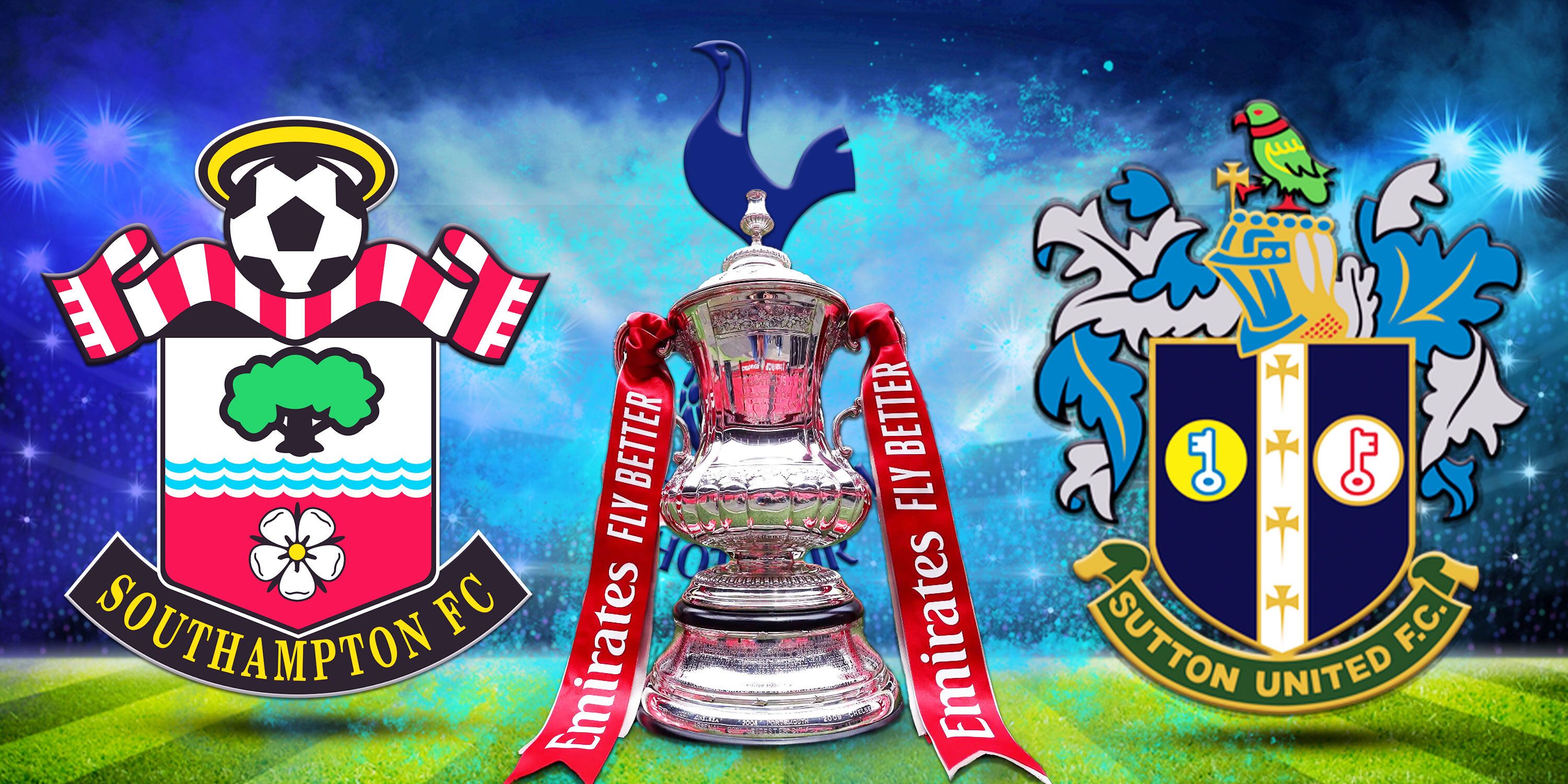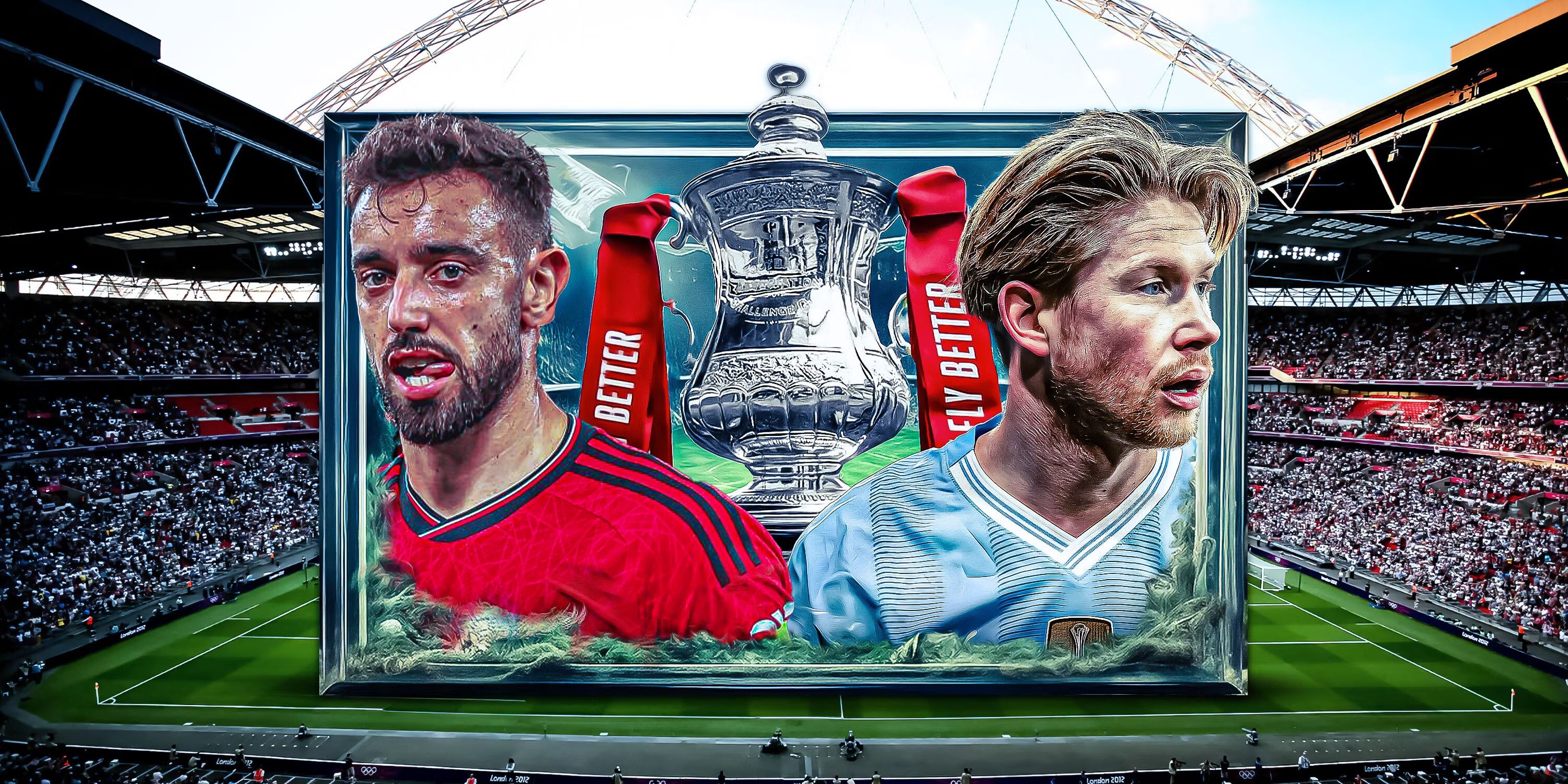Highlights
- The 1923 FA Cup final with Bolton vs. West Ham holds the record for the most attended final with 126,047 spectators.
- Aston Villa’s 2-0 win over Newcastle in 1905 attracted 101,117 attendees at Crystal Palace.
- The 1913 final with Aston Villa vs. Sunderland amassed 121,919 spectators.
The FA Cup is one of the most important days in the English sporting calendar. It epitomises everything about English football history, with clubs desperate to play under the arch at Wembley. The tension is always there from the qualifying rounds where non-league teams dream of glory to the latter stages with the ‘Big Six’.
Taking place at the end of the season, the final captivates the whole country — and several others. Fans dream of playing there, with tickets hard to come by. Over the years, some FA Cup finals have had remarkable attendances, particularly due to health and safety being far more lenient 80 years ago. Due to this, GIVEMESPORT has looked at the 10 highest attendances in FA Cup final history.
It’s worth noting that countless attendances have been classed at 100,000. When this was the case, we have used the attendances from further ago on this list.
|
10 highest FA Cup final attendances |
||||
|---|---|---|---|---|
|
Rank |
Match |
Year |
Stadium |
Attendance |
|
1. |
Bolton 2-0 West Ham |
1923 |
Wembley Stadium (original) |
126,047 |
|
2. |
Aston Villa 1-0 Sunderland |
1913 |
Crystal Palace National Sports Centre |
121,919 |
|
3. |
Tottenham 2-2 Sheffield United |
1901 |
Crystal Palace National Sports Centre |
110,820 |
|
4. |
Aston Villa 2-0 Newcastle |
1905 |
Crystal Palace National Sports Centre |
101,117 |
|
5. |
Arsenal 2-0 Liverpool |
1950 |
Wembley Stadium (original) |
100,000 |
|
6. |
Newcastle 2-0 Blackpool |
1951 |
Wembley Stadium (original) |
100,000 |
|
7. |
Newcastle 1-0 Arsenal |
1952 |
Wembley Stadium (original) |
100,000 |
|
8. |
Blackpool 4-3 Bolton |
1953 |
Wembley Stadium (original) |
100,000 |
|
9. |
West Brom 3-2 Preston |
1954 |
Wembley Stadium (original) |
100,000 |
|
10. |
Newcastle 3-1 Man City |
1955 |
Wembley Stadium (original) |
100,000 |

FA Cup 2023/24: Final, Date, TV Channels and More
Everything you need to know about the 2023/2024 FA Cup, including round dates, fixtures, draws and prize money.
10 Newcastle 3-1 Man City
100,000 – 1955
Newcastle beat Manchester City 3-1 in the FA Cup final in front of 100,000 at Wembley Stadium. It was their third FA Cup triumph in five years and their sixth of all time. Jackie Milburn scored Newcastle’s first goal after 45 seconds, a record for the earlier goal in a final that stood until 1997 before Bobby Johnstone equalised for City just before half-time. Bobby Mitchell restored Newcastle’s lead in the 52nd minute, and George Hannah extended it seven minutes later. It was an incredible moment for the Magpies, as even an initial equaliser from Bobby Johnstone for City couldn’t save them.
|
Match Stats |
|
|---|---|
|
Newcastle goalscorers |
Milburn (‘1), Mitchell (’52), Hannah (’59) |
|
Man City goalscorers |
Johnstone (’45) |
9 West Brom 3-2 Preston
100,000 – 1954
Ahead of the match, West Bromwich Albion were appearing in their ninth final, having won the cup on three previous occasions, while Preston had won the competition twice and were playing in the final for the sixth time. This time around, the Midlands side claimed the bragging rights. Ronnie Allen kickstarted proceedings, only for Angus Morrison to equalise for Preston a minute later. The two goals in two minutes foreshadowed the rest of the match, as West Brom came from 2-1 down to win 3–2 thanks to an 87th-minute goal from Frank Griffin. Cued memorable scenes for the club.
|
Match Stats |
|
|---|---|
|
West Brom goalscorers |
Allen (’21, ’63), Griffin (’87) |
|
Preston goalscorers |
Morrison (’22), Wayman (’51) |
8 Blackpool 4-3 Bolton
100,000 – 1953
If you thought West Brom vs Blackpool was entertaining, the FA Cup final a year earlier between Blackpool and Bolton was even better, as the club on the west coast secured a dramatic 4-3 victory in front of 100,000 people. The match became famous for an extraordinary performance from Stanley Matthews, considered one of the greatest players of all time by some people, who had the opposition in his control. Meanwhile, Stan Mortensen scored a hat-trick. In doing so, it became just the third FA Cup final, after ones in 1890 and 1894, to feature a hat-trick.
|
Match Stats |
|
|---|---|
|
Blackpool goalscorers |
Mortensen (’35, ’68, ’89), Perry (’90+2) |
|
Bolton goalscorers |
Lofthouse (‘2), Moir (’39), Bell (’55) |
7 Newcastle 1-0 Arsenal
100,000 – 1952
A year earlier, Newcastle were playing in their 11th FA Cup final and their second in consecutive years. Arsenal were playing the Magpies with several recovering players rushed back into the first team. It was made worse when Walley Barnes was taken off injured with a twisted knee after 35 minutes. With competition rules remarkably stating injured players could not be replaced, Arsenal had to suffer with 10 men, which eventually became seven by full-time. Unsurprisingly, Newcastle took advantage, as a late strike from George Robledo secured victory for them. Their numerical advantage took time to pay off, but it eventually sparked incredible scenes at Wembley.
|
Match Stats |
|
|---|---|
|
Newcastle goalscorers |
Robledo (’84) |
|
Arsenal goalscorers |
N/A |
3:20

The 10 best FA Cup runs by non-league teams
The FA Cup is the home of giant killings in football – as showcased by these non-league teams.
6 Newcastle 2-0 Blackpool
100,000 – 1951
Newcastle won their fourth FA Cup in 1951, which would eventually become five a year later against Arsenal. In front of 100,000 people, the Magpies cruised to victory thanks to an impressive start to the second half. Two strikes from Jackie Milburn, who played just 13 times for England, helped Newcastle to victory. His first came after Robledo’s pass beat the offside trap and Milburn was away to tuck the ball past George Farm from fifteen yards. His second came as he received a clever back-heel from Ernie Taylor before firing in a terrific left‑foot drive from twenty‑five yards out which had Farm completely beaten.
|
Match Stats |
|
|---|---|
|
Newcastle goalscorers |
Milburn (’50, ’55) |
|
Blackpool goalscorers |
N/A |
5 Arsenal 2-0 Liverpool
100,000 – 1950
Arsenal won the FA Cup for a third time in 1950 after beating Liverpool 2-0 in front of 100,000 people at the original Wembley Stadium. In the build-up to the match, Liverpool dropped future manager Bob Paisley for the contest, even though he had scored against Merseyside rivals Everton in the semi-final. It didn’t prove to help them, as two strikes from Reg Lewis secured victory. His second, which sealed victory in the second half, came after Freddie Cox crossed from the right and Lewis, 20 yards from goal, hit a first-time shot past Cyril Sidlow. It was a stunning strike for the time to send the Gunners fans into jubilance.
|
Match Stats |
|
|---|---|
|
Arsenal goalscorers |
Lewis (’18, ’63) |
|
Liverpool goalscorers |
N/A |
4 Aston Villa 2-0 Newcastle
101,117 – 1905
In the early 1900s, the FA Cup final was regularly played at the Crystal Palace National Sports Centre instead, as the original Wembley did not hold the event until 1923. It often saw packed crowds attend, with 101,117 there in 1905. On that occasion, Aston Villa triumphed with a 2-0 victory. Two strikes from Harry Hampton, who played over 300 matches for the club, sealed the victory. His second goal came as Bert Hall’s long shot rebounded off Newcastle goalkeeper Jimmy Lawrence before it fell perfectly for Hampton to seal victory. With it happening over 100 years ago, football was drastically different.
|
Match Stats |
|
|---|---|
|
Aston Villa goalscorers |
Hampton (‘2, ’76) |
|
Newcastle goalscorers |
N/A |
3 Tottenham 2-2 Sheffield United
110,820 – 1901
Four years before the 1905 final between Aston Villa and Newcastle, Tottenham faced Sheffield United at the Crystal Palace National Sports Centre, with 110,820 in attendance. Sheffield United had the perfect start when Fred Priest gave them the lead in the 10th, but Spurs fought back, with two strikes from Sandy Brown giving them the lead. However, their lead lasted just one minute as Walter Bennett equalised for the Blades to disappoint the Lilywhite faithful. The match came at a time when FA Cup replays were used to decide the winner. With this match ending 2-2, Tottenham played Sheffield United again, winning 3-1 in Bolton to get their hands on the trophy.
|
Match Stats |
|
|---|---|
|
Sheffield United goalscorers |
Priest (’10), Bennett (’52) |
|
Tottenham goalscorers |
Brown (’23, ’51) |
2 Aston Villa 1-0 Sunderland
121,919 – 1913
In 1913, Aston Villa beat Sunderland 1-0 in Crystal Palace in front of 121,919 people. It was their fifth FA Cup title, coming just one year before the start of World War I. During the match, Sunderland’s Charlie Thomson and Villa’s Harry Hampton almost immediately resumed a long-running feud that led to both players being suspended for a month at the start of the following season. The contest was noted for its rough play and led to the withdrawal of Sunderland’s invitation to take part in the 1913 Charity Shield match. Despite this, a second-half strike from Tommy Barber sealed victory for the Villans.
|
Match Stats |
|
|---|---|
|
Aston Villa goalscorers |
Barber (’78) |
|
Sunderland goalscorers |
N/A |

How to Watch the FA Cup on TV
An essential guide on how to watch 2023/24 FA Cup football, including semi-final TV listings, channels and kick-off times.
1 Bolton 2-0 West Ham
126,047 – 1923
Finally, the most attended FA Cup final of all time came in 1923 between Bolton and West Ham at Wembley. It was the first ever match at the stadium with it only being built in the same year, with over 126,000 people packing into the stadium. Health and safety was drastically different to nowadays, which allowed so many people to watch Bolton win the FA Cup for the first time with a 2-0 victory. David Jack opened the scoring for the northern side in the second minute before Jack Smith sealed victory at the start of the second half. The match was disrupted by people getting onto the pitch, but thankfully the contest was able to finish.
|
Match Stats |
|
|---|---|
|
Bolton goalscorers |
Jack (‘2), Smith (’53) |
|
West Ham goalscorers |
N/A |
Attendances via Nationwide Football Annual 2008–2009 by Stuart Barnes
About Author
You may also like
-
Giannis Antetokounmpo Responds to Alperen Sengun’s Criticism
-
Liverpool boss Arne Slot provides Alexis Mac Allister injury update
-
Liverpool boss Arne Slot provides Alexis Mac Allister injury update
-
Moyes Must Axe Everton Star Who Started v Aston Villa
-
Liverpool beat Burnley but Jamie Carragher was upset with one player